Children and young people of this age have taken their first steps on the Internet and already know their way around reasonably well. Almost all of them now have their own cell phone or can use one of their parents’ devices. On the one hand, the interests and activities are as diverse as the children themselves; on the other hand, very similar phenomena can be observed. It is becoming increasingly important to use the media to build a world of their own, even without the guidance and supervision of parents. This includes communicating more and more with friends, increasingly unobserved by parents.
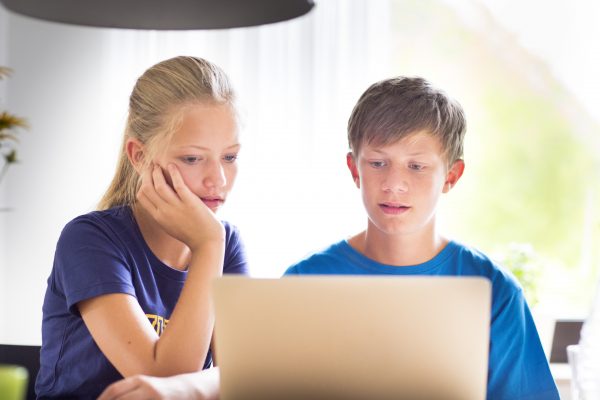
© photothek.net
Interests are further developed online. Children find out about topics of their own choosing, follow celebrities on social media or video platforms, and begin to show themselves off to their peers or even the public via various apps. For some, it is important to play undisturbed alone or with their friends – even online. In the process, they develop their own expertise and skills and live out their creativity.
Children and young people are not yet able to assess very well what it means to put certain data on the Internet, what other risks there are, or how it should be assessed when others misbehave on YouTube and the like. Increasingly, young people are moving away from purely child-friendly media use, going online more often on their own and repeatedly encountering content that can overwhelm them and that they cannot process on their own. In addition to youth media protection, you as parents should still lend a helping hand. Feel free to share your child’s diverse experiences on the web and also support your child’s formation of opinions about them. As parents, you have a particularly important guiding role in this transitional phase, and you should encourage safe use of digital media.
When children start school, they can already do a lot with media and enjoy using them. Because they can now read and write, they also want to operate media independently. At the same time, they look to you as parents, siblings and peers for guidance when it comes to choosing media content.
They enjoy fun and entertaining formats. Characters from stories they know from children’s series, books and magazines are role models they want to emulate and compare themselves to. They especially like stories that are about friendship. And media are also increasingly used for the search for identity. Who am I? What kind of girl or boy do I want to be? They increasingly use media to inform themselves and to learn. Search engines are becoming an important tool for this, as are YouTube videos.
For children and young people, media are important companions that support them in their development in various ways, among other things. Depending on their age, they take on different functions – whether entertainment and fun, orientation or information.

Copyright: Ute Grabowsky/photothek.net
For preschoolers, media are objects they want to discover for themselves. But they are also storytellers. Stories are told in media such as books – whether analog or digital, radio plays or films. Children use various media for playing, e.g. age-appropriate game and painting programs on the computer, smartphone or tablet. Even for younger children, there are suitable offers that they can use together with their parents. Even the media characters in a story can become playmates in children’s imaginations.
Even before they start school, children can learn with the help of media. Knowledge can be found in stories or is delivered in age-appropriate offerings such as The Elephant Show. Apps specially programmed for children can also be used to playfully discover new things together with parents.
In addition, media provide guidance for children. Here they find a variety of role models, some of them dubious. From an early age, children replay media content and try out behaviors seen there. In order to process what they have seen and to be able to classify it correctly, they need your support.
When you choose media options for your child, they should be age-appropriate and take their needs into account. Also, remember to provide alternative offerings to balance things out. Because a child’s needs can and should be met without media. Media are thus not given undue importance in children’s everyday lives.
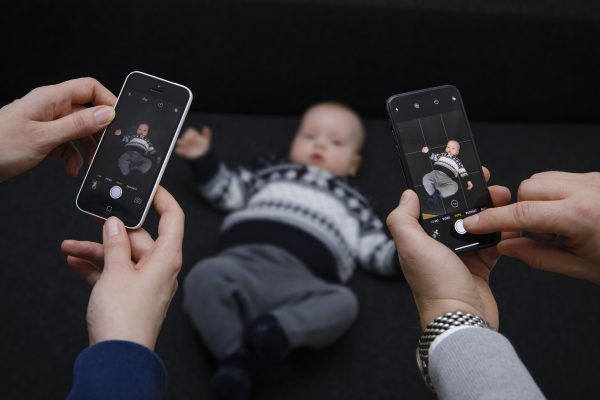
Copyright: Thomas Trutschel/photothek.net
As parents, you should set rules for the media use of infants and babies. The very young need a lot of attention and care. Eye contact and a direct approach are important to develop a bond between you and your child. If you are constantly looking at your smartphone, you are distracted and your child notices. You should also discuss such rules with other close caregivers such as grandparents, siblings or the teachers at the daycare center so that they know what is important to you with regard to your child and its contact with media.
Children do not understand media until they are about one and a half years old. Very gradually, they understand what media are and what happens in them. They acquire media gradually by observing, exploring, trying out, and imitating. Access to digital media should not be encouraged or even forced. Slowly introduce your child to analog media such as children’s books, and then gradually expand the media assortment with offerings suitable for children.
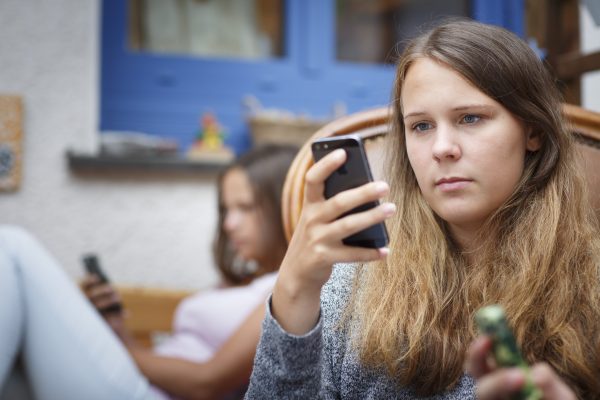
Copyright: Ute Grabowsky/photothek.net
By the time he or she enters secondary school, at the latest, your child will probably have one, too. The smartphone plays a major role among children and young people. Whether through Messenger, the YouTube app, the music player, the navigation app or Instagram: The smartphone is an important part of their everyday lives. At the same time, it is felt almost like a part of one’s own person. Without a smartphone, many young people do not fill completely.
Apps, functions and accessories can personalize and individualize the smartphone and turn it into a status symbol. Different aspects, such as cell phone cover, wallpaper or make of the cell phone are supposed to show that one is up-to-date or particularly cool. This is not a new phenomenon. In the past, clothing or music served as a means of self-expression and demarcation. A special feature of the smartphone is that very personal experiences are documented and stored. The young people have their smartphone all to themselves. And it makes it possible to store intimate things, whether love messages in WhatsApp or photos for self-expression on Insta.
The smartphone has also given rise to a new form of communication among young people that adults can’t always comprehend. Chatting with friends while checking messages is not uncommon and is not necessarily considered rude. At the same time, the smartphone promotes risks such as cyberbullying and sexting, as offline and offline worlds merge.
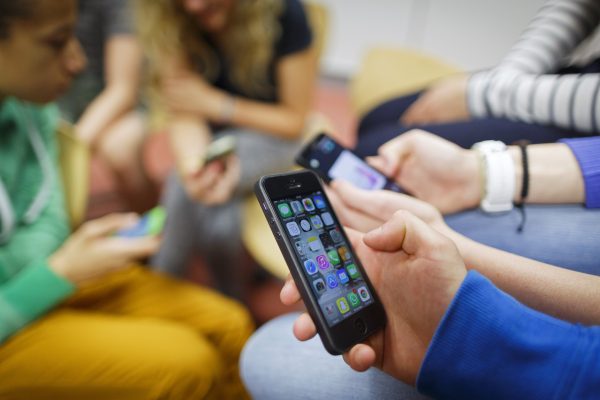
Copyright: photothek.de
More and more children of primary school age, at the latest from around 10 years of age, also have their own smartphone. When they enter secondary school, they are thus available to their parents at all times. At the same time, the desire for independence is on the rise. With your own cell phone, you are no longer dependent on mom or dad’s device, but can usually decide for yourself when to communicate with whom or play the mobile game. However, this harbors potential for conflict and the negotiation of rules becomes necessary.
Digital – especially mobile – media play a major role in communication. Sharing with each other, sharing yourself and testing everything out is important for teenagers. In communication with each other, i.e. with peers, common experiences, adventures and conflicts are shared and reflected upon. Situations from everyday life, such as the bad grade, stress at home or the common crush are occasions for communication – especially away from the adult world.

Copyright. photothek.de
This contributes to the ability to resolve conflicts without parental support, to form one’s own opinion and to defend it. Last but not least, this also serves to actively differentiate the company from other groups. So a new form of independence is also being lived out in digital media.
It may be that your child’s communication sometimes seems cryptic and incomprehensible to you. Do you remember youth language when you were a teenager? Emojis, abbreviations and your own secret words create a protected communication in which teenagers confide in each other. Last but not least, this also serves to actively differentiate the company from other groups.
Digital media are an important part of young people’s everyday culture. There is hardly any separation between offline and online. Especially through mobile media such as the smartphone, these worlds are merging. In the familiar and newly created free spaces, young people try things out, make new friends, develop and share interests. Communication and friendship in everyday life is not replaced, but expanded.

Copyright: photothek.de
Today, it is easier than ever to publish your own opinions and self-designed content. Whether on fashion blogs, gaming sites or YouTube – young people can try out digital spaces and test out how they come across. You can find like-minded people across spatial and social boundaries. Their use of media is fast-moving and their fascination with certain offerings is not always easy to understand: what is exciting today may be boring tomorrow. Interest also depends on what other peers think is great. In addition to hip apps and certain music, the latest series on Netflix is one of them.
For you as a parent, it is particularly difficult to muster understanding when, for example, depictions of violence, horror and splatter films or soft porn are consumed on the net. Much of the content is not always age-appropriate and difficult for young people to assess in terms of its impact. But they want to test their limits. In their digital spaces, the boundaries can be very diverse. In addition to watching certain movies, this can also be contacting people you don’t know. If, for example, contact with the unknown person suddenly becomes unpleasant or the intimate photo suddenly circulates among friends, this can have serious consequences.
It is a difficult task for you as parents to find the right way here. Protect your children from potential dangers, but also encourage autonomous and creative use of digital media.
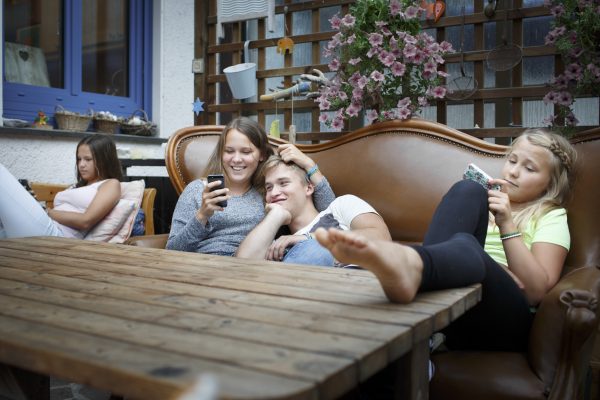
Copyright: Ute Grabowsky/photothek.net
Young people use digital media intensively and in many different ways. Social networks, messenger, YouTube and streaming services are particularly popular. Here they chat with friends, share pictures and videos, “like” and comment on posts, pose and be entertained. For young people, such platforms are a great playground for trying things out.
The adolescent phase includes setting oneself apart from the parental home, testing boundaries, and seeking and using personal freedom. Social media offers many opportunities for this. It is okay if you do not supervise your child everywhere. Children’s independence is positive and should be supported and critically accompanied by you. But this includes preparing them for this by making them aware of the risks and opportunities of digital media and showing them ways to deal with them.
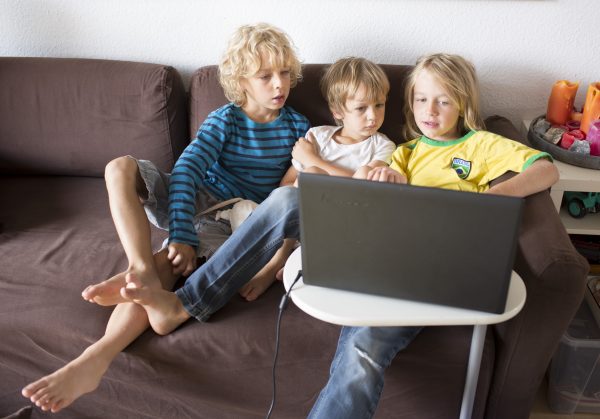
Copyright: Ute Grabowsky/ photothek.net
Preschool and elementary school children are curious and inquisitive in discovering their own living environment. This also includes media: What are mom and dad actually doing on the computer for so long? Why is big sister typing away on her cell phone every free minute? Even young children are fascinated by digital media. Above all, they want to do what the big guys do.
Opportunities for children’s media use and first steps on the Internet are many and varied – from picture books to the latest episode of their favorite series on their tablet to game apps. Well-known characters from popular children’s series on the video platform or on television provide an initial access point to the network in terms of content. They appear not only in videos, but also as online games, quizzes or picture stories. Children’s websites focus on interactivity and participation. And the interest is not limited to pastime and entertainment, your child wants to learn and discover!
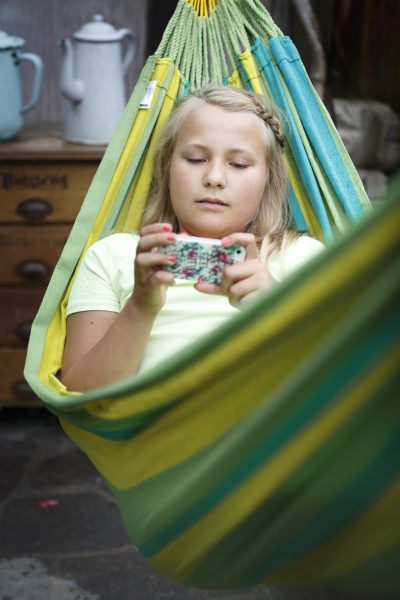
Copyright: Ute Grabowsky/photothek.net
Children and adolescents are constantly looking for new spaces of experience, even those that are far from your control as parents. You must allow your child this freedom, because it is meaningful and necessary for him to develop independence. Children and young people today use this freedom especially in social networks such as
WhatsApp
and
Instagram
, on
YouTube
or in computer games. Prohibiting access to these platforms in general is impossible and does not make sense from a pedagogical point of view. However, conscious or unconscious border crossings can also be carried out in these spaces. Your child is trying things out, for example, by watching content that is not intended for his or her age. The older your child gets, the greater his or her rights are and, accordingly, the more freedom he or she should have.
There is no simple solution to conflicts in dealing with media. It is helpful to establish common media rules. These should be understandable to all family members. Also, everyone should be included and they must apply to everyone.
The first two years of a child’s life are characterized by the development of perception and discovery of the environment. Of course, media are also part of this environment. Babies first perceive them in the same way as other objects. Little by little, they recognize the medial in these things, for example, by mom or dad looking at a picture book with them.
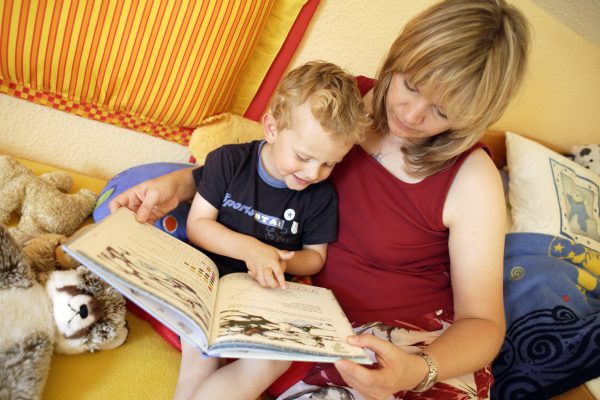
© photothek.net
Young children learn best when they can experience a stimulus on more than one sensory organ at a time. For example, when they are exploring a picture book, it helps your child a lot if they look at the book with you and you talk about it with them. When you name objects, children learn them faster.
From an early age, children want to communicate and express themselves through language. Even very young children prefer complex sounds that resemble speech. Child-friendly music, audio books or singing together with parents help with language development.
Young children can recognize film footage at an early age. However, their attention span is still very short. At about 4 to 5 months, they can focus on moving images of 10 seconds or less. Even if this ability improves quickly, it does not mean that they understand filming and that it helps them learn.
Even in the second year of life, children learn better when they see an action for real. A good rule of thumb is that children should not watch more than 20 minutes of television per day between the ages of two and three. However, the exact time always depends on the particular family and especially the particular child.
The older the children get, the more interesting digital media such as smartphones or tablets become. From a very individual point in time, young children learn how to use smartphones, laptops and televisions from their parents and siblings.
They recognize mom or dad on cell phone pictures and want to look at them over and over again. The output of sounds, music or images on the smartphone becomes more interesting. So young children come into contact with digital content again and again. Contact should then not be generally prohibited by you and, if necessary, the siblings, but it should be reduced to an acceptable level.
It is particularly important that the first contact with media is well dosed, supervised and under constant supervision. Then media can also be very useful to young children.